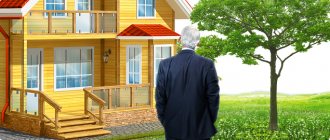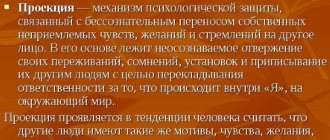It has long been known in psychology that in their creativity people express feelings and thoughts through images in one way or another. Therefore, the drawing reflects individuality and allows you to learn more about a person, his personal characteristics and problems. The patterns noticed by scientists can be used for self-diagnosis. Draw a tree on a piece of paper, and then analyze your action using prompts
General impression
If you couldn’t complete the drawing for a long time and tried to correct and redo something, then your desires are contradictory. You live with a feeling of internal conflict. If you couldn’t finish drawing the tree at all, then this is an indicator of overwork and weakness. Thin lines in the drawing, made with almost no pressure, indicate self-absorption, concentration on one’s own experiences, and may also indicate a depressive state and physical weakness.
Confidence of lines and clarity in the image are a sign of resistance to stress.
If there is a lot of shading in the drawing, then you lack self-confidence. You are, in all likelihood, an anxious, suspicious and often doubtful person.
If you draw poorly (not everyone can be a great artist), but at the same time brought the work to its logical conclusion, then your strengths are determination, perseverance and faith in your own strength.
What can you analyze with this test?
An article in Exploring Your Mind explains it this way:
“It requires us to draw a picture, choose colors, and create an object on a blank page. This drawing can help us understand our condition, sensitivity, vulnerability, the absence or presence of internal conflicts, as well as mental and emotional stability in life.”
According to psychoanalysts (2015 study), the Karl Koch test can even help diagnose cognitive impairment and dementia.
How to decipher the Koch tree test
When analyzing the test, you need to carefully consider the following details in the tree image:
Layout on sheet
If the tree is large and takes up about three-quarters of the leaf, then you have a positive outlook on the world around you. You are an active and energetic person.
If the tree is small, you lack vital energy, you are trying to hide from possible problems.
If you don’t have enough space for a tree, then this is a sign of your breadth of nature, wealth of imagination and great possibilities.
A tree leaning to the left indicates impulsiveness. You know how to be happy with what you have, but sometimes you are frightened by the future and upset by the inability to return the past.
A tree leaning to the right reveals that you are a person of strong emotions and a rich inner life. But at the same time you know how to control yourself.
Test interpretation
The tree symbolizes the vital forces of human development.
Essential details:
- Trunk;
- More than one branch.
3 important steps
which every woman should go through
Anika Snagovskaya
Author and presenter of women's trainings on harmonizing feminine energy. Master of removing limiting beliefs and master of constellations.
I have prepared three lessons for you that will help you better understand yourself, remove the restrictions that prevent you from feeling loved and living happily.
01
Video lesson with meditation: 5 states of femininity
You will learn about 5 female states that exist in every woman, how they manifest themselves and which archetypes are most manifested in you and which are not developed.
02
Video lesson + meditation: How to let go of past relationships
I’ll tell you what you need to do to free your heart from old feelings and break the energy threads connecting you with your past partner.
03
Audio recording: Neuro-af
Thanks to this neuro-affirmation, you can regain self-love and feel sincere gratitude and happiness for every day.
✕
Take your gifts!
Let’s immediately discuss two options for depicting a tree, when formally the task is completed, but in essence it is a refusal to analyze one’s own vital development. Options:
- Drawing of a Christmas tree in the form of sticks;
- Drawing of a Christmas tree.
The difference between them is only in demonstrating the mood that this topic evokes. In the first case - depressive, in the second - deliberately joyful.
Meaningful features
Tree dimensions
| Characteristic | Decoding |
| Small | Dependence on others, lack of independence |
| Big | The desire to attract attention |
Crown features
A rounded crown is a sign of emotionality and openness.
If it consists of curved lines, then you are a realist and a pragmatist. You also know how not to give in to negativity and cope with challenges.
A crown consisting of circles signals that you lack positivity in your life.
Smooth lines are an indicator of a realistic view of people and events.
A crown formed of circles also suggests that you lack the company of people who love and appreciate you. This makes it difficult to feel needed and protected.
The zigzag lines of the crown reveal a prudent and reserved nature.
What is this test called “Karl Koch tree”?
The author, Swiss psychologist Karl Koch, developed it in the 1950s, and this test is widely used by psychologists to assess a person's personality and emotional state. The test is often used for children over 6 years of age, but it is also great for adults.
Online publication Exploring Your Mind says the main benefit of the test is that it is ideal for different age groups, and its results help psychologists collect important data about how people perceive themselves and their lives.
You might be interested in: Test: Only 1% of people can see the animal in the picture
Barrel lines
If the trunk is straight and evenly tapers upward, then you are an enterprising and optimistic person. When problems arise, you know how to find the best way to resolve them. If it’s crooked, then you lack courage and activity.
If the trunk quickly narrows from the wide base upward, then the adversities suffered in childhood still dominate you.
A clear connection between the trunk and branches is a sign of a high intellectual level and a rich inner world. If there is a hollow in a tree, then there is an unhealed wound in your soul. And if any animal sticks out of the hollow, then you are lonely.
Identifying character traits using the “Choose a Shape” test
A psychological test that can be carried out independently or with the help of a psychologist. You need to draw 4 drawings on separate sheets of paper in advance. These are circle, triangle, rectangle, square, zigzag. After this, the patient needs to choose the figure that is most attractive to him, and arrange the rest in descending order.
Decoding the result:
- If the square comes first, the person is a workaholic. He brings any job he starts to completion. The individual has an excellent memory and works responsibly. They pay more attention to work and development.
- If the triangle comes first, the person is powerful, a leader. They are distinguished by strength, courage, and the ability to resolve any controversial situations or difficult moments. They do not admit their own mistakes; they always think they are right. Such an individual does not care about other people's opinions.
- If the circle comes first, a person strives to achieve harmony. Creates a pleasant atmosphere around himself, is sociable, caring. He knows how to help everyone, regardless of the situation, and will listen in difficult times.
- The rectangle comes first - a person constantly changes his views and preferences. It is impossible to notice the sequence of actions, to identify a pattern. It is impossible to fully understand such a person. Doesn't stop looking for something better, dissatisfied with what he has.
- If the zigzag comes first, this is a creative nature. Naive, kind, easily suggestible.
Branch outlines
Thick and clearly drawn branches are a harmonious combination of intelligence and energy. You can give your best in your activities and take all the benefits from life.
Branches with thorns reveal hidden fears and the desire to defend oneself. Volumetric branches reveal you as a sociable person, with the makings of a leader.
Pointed upward is a sign of enthusiasm and dedication.
Drooping or drooping branches are often evidence of confusion and despondency.
Branches going in different directions are usually depicted by those who do not know how to focus on one thing and rush around.
The predominance of branches on the left side indicates that in your actions you are more often guided by reason than by feelings. If there are more branches on the right, you are tempted by quick results with a minimum of effort.
LiveInternetLiveInternet
The test can be taken by both adults and children, and a group examination is possible. The examinee is asked to draw a house, a tree and a person (DH). Next, a survey is built based on the location of the elements and their characteristics. R. Berne, when using the DDH test, suggests drawing a house, a tree and a person in one drawing, taking place in one scene. The scientist believes that the interaction between these objects represents a visual metaphor. If you put the whole drawing into action, then it is quite possible to notice what is really happening in our lives. Material: pencil or pen, standard size sheet of paper (A4). Instructions. Draw a picture on a piece of paper that includes 3 objects - a house, a tree and a person.
Interpretation of signs
A special way of interpretation may be the order in which the drawing of the house, tree and person is made. If a tree is drawn first, then the main thing for a person is vital energy. If the house is drawn first, then safety, success, or, conversely, neglect of these concepts comes first. Now let's look at all the components separately. “House” The house is old, falling apart. Sometimes a subject can express an attitude towards himself in this way. A house far away - a feeling of rejection (rejection) A house near - openness, accessibility and (or) a feeling of warmth and hospitality. The plan of the house (projection from above) instead of the house itself is a serious conflict. Different buildings are aggression directed against the actual owner of the house or a rebellion against what the subject considers artificial and cultural standards. The shutters are closed. The subject is able to adapt to interpersonal relationships. Steps leading into a blank wall (without doors) are a reflection of a conflict situation that is detrimental to a correct assessment of reality, the inaccessibility of the subject (although he himself may desire free cordial communication). Walls The back wall, located unusually, represents conscious attempts at self-control, adaptation to conventions, but at the same time there are strong hostile tendencies. The outline of the back wall is significantly thicker (brighter) compared to other parts. The subject strives to maintain (not lose) contact with reality. The wall, the absence of its base, is a weak contact with reality (if the drawing is placed below). A wall with an accented outline of the base. The subject tries to repress conflicting tendencies and experiences difficulties and anxiety. A wall with an accentuated horizontal dimension means poor orientation in time (dominance of the past or future). Perhaps the subject is very sensitive to environmental pressure. A wall with a side contour that is too thin and inadequate is a premonition (threat) of disaster. Near the wall, the contours of the line are too accentuated - a conscious desire to maintain control. A wall in one-dimensional perspective - only one side is shown. If it is a side wall, there are serious tendencies towards alienation and opposition. Transparent walls - an unconscious attraction, the need to influence (own, organize) the situation as much as possible. A wall with an accentuated vertical dimension - the subject seeks pleasure primarily in fantasies and has less contact with reality than is desirable. Doors Their absence means the subject experiences difficulties in trying to open up to others (especially in the home circle). Doors (one or more) back or side - retreat, detachment, avoidance. Doors are open - the first sign of frankness and achievability. The doors are open. If the house is residential, this is a strong need for warmth from the outside or a desire to demonstrate accessibility (frankness). Side doors (one or more) - alienation, solitude, rejection of reality. Significant inaccessibility. The doors are very large - excessive dependence on others or the desire to surprise with your social sociability. Doors are very small - reluctance to let into your Self. Feelings of inadequacy, inadequacy and indecisiveness in social situations. Doors with a huge lock - hostility, suspiciousness, secrecy, defensive tendencies. Smoke The smoke is very thick - significant internal tension (intensity based on the density of the smoke). Smoke in a thin stream - a feeling of lack of emotional warmth at home. Windows Windows - the first floor is drawn at the end - aversion to interpersonal relationships. Tendency to isolate from reality. The windows are very open. The subject behaves somewhat cheekily and straightforwardly. Many windows show a willingness to make contact, and the absence of curtains shows a lack of desire to hide one’s feelings. The windows are heavily closed (curtained) - preoccupation with interaction with the environment (if this is significant for the subject). Windows without glass - hostility, alienation. The absence of windows on the ground floor means hostility, alienation. There are no windows on the lower floor, but there are on the upper floor - a gap between real life and life in fantasy. Roof The roof is a realm of fantasy. The roof and chimney torn off by the wind are a symbolic expression of the subject’s feelings of being commanded regardless of his own willpower. The roof, a bold outline that is not characteristic of the entire drawing, is a fixation on fantasies as a source of pleasure, usually accompanied by anxiety. The roof, the thin outline of the edge - the experience of weakening control over fantasy. Roof, thick outline of the edge - excessive preoccupation with control over fantasy (its curbing). A roof that does not fit well with the lower floor is a bad personal organization. The eaves of the roof, its accentuation with a bright outline or extension beyond the walls, is a highly protective (usually suspicious) installation. Room Associations may arise in connection with: 1) the person living in the room; 2) interpersonal relationships in the room; 3) the purpose of this room (real or attributed to it). Associations can have a positive or negative emotional connotation. A room that did not fit on the sheet is the reluctance of the subject to depict certain rooms due to unpleasant associations with them or with their occupant. Room. The subject chooses the nearest room - suspiciousness. The bath performs a sanitary function. If the manner in which the bath is depicted is significant, these functions may be impaired. Pipe No pipe. The subject feels a lack of psychological warmth at home. The pipe is almost invisible (hidden) - reluctance to deal with emotional influences. The pipe is drawn obliquely in relation to the roof - the norm for a child; significant regression if found in adults. Drainpipes - enhanced protection and usually suspicious. Water pipes (or roof drains) are enhanced protective installations (and usually increased suspiciousness). Additions Transparent glass box. Symbolizes experiencing, putting yourself out there for everyone to see. He is accompanied by a desire to demonstrate himself, limiting himself only to visual contact. Trees. Often symbolized by various faces. If they seem to be hiding at home, there may be a strong need for dependency with parental dominance. Bushes. Sometimes they symbolize people. If they surround the house, there may be a strong desire to protect themselves with protective barriers. Bushes are chaotically scattered throughout the space or located on both sides of the path indicate minor anxiety within the framework of reality and a conscious desire to control it. Path (good proportions, freely drawn) - shows that the individual displays tact and self-control in contacts with others. The road is very long - reduced availability, often accompanied by the need for more adequate socialization. The path is very wide at the beginning and narrows greatly at the house - an attempt to disguise the desire to be alone, combined with superficial friendliness. Sun. Symbol of an authority figure. Often perceived as a source of warmth and strength. Weather (what weather is depicted). Reflects the subject’s experiences as a whole associated with the environment. Most likely, the worse, more unpleasant the weather is depicted, the more likely it is that the subject perceives the environment as hostile and constraining. Color Color, its common uses. Green for the roof, brown for the walls. Yellow, if used only to depict light inside the house, thereby depicting night or its approach, expresses the feelings of the subject, namely: 1) the environment is hostile to him; 2) his actions must be hidden from prying eyes. Number of colors used. A well-adjusted, shy, and emotionally uninvolved subject will usually use at least 2 and no more than 5 colors. A subject who paints a house with 7-8 colors is, at best, very labile; someone who uses only 1 color is afraid of emotional arousal. Choosing colors The longer, more uncertainly, harder the subject selects colors, the greater the likelihood of having personality disorders. The color black is shyness, timidity. The color green is the need to have a sense of security, to protect oneself from danger. This position is not so important when using green for the branches of a tree or the roof of a house. The color orange is a combination of sensitivity and hostility. The color purple is a strong need for power. The color red is the most sensitive. The need for warmth from the environment. Color shading 3/4 of the sheet - lack of control over the expression of emotions. Hatching that extends beyond the boundaries of the drawing is a tendency to impulsively respond to additional stimulation. The color yellow is a strong sign of hostility. General view Placing a drawing on the edge of the sheet is the main feeling of uncertainty and danger. Often associated with a certain temporal meaning: a) the right side is the future, the left is the past; b) related to the purpose of the room or its permanent occupant; c) indicating the specificity of experiences: the left side is emotional, the right is intellectual. Perspective The perspective “above the subject” (look up) is the feeling that the subject is rejected, excluded, not recognized at home, or the subject feels the need for a home that he considers inaccessible, unattainable. Perspective, the drawing is depicted in the distance - a desire to move away from conventional society. Feeling of isolation, rejection. There is a clear tendency to isolate oneself from one’s surroundings. The desire to reject, not to recognize this drawing or what it symbolizes. Perspective, signs of loss of perspective (the individual correctly draws one end of the house, but at the other draws a vertical line of the roof and walls - does not know how to depict depth) signal the beginning difficulties of integration, fear of the future (if the vertical side line is on the right) or the desire to forget the past ( line on the left). Triple perspective (three-dimensional, the subject draws at least 4 separate walls on which not even 2 are in the same plan) - excessive concern with the opinions of others about oneself. The desire to keep in mind (to recognize) all connections, even minor ones, all features. Place the picture Place the picture above the center of the sheet. The larger the figure above the center, the greater the likelihood that: 1) the subject feels the severity of the struggle and the relative unattainability of the goal; 2) the subject prefers to seek satisfaction in fantasies (internal tension); 3) the subject tends to stay aloof. Placing the drawing exactly in the center of the sheet is insecurity and rigidity (straightness). The need for careful control to maintain mental balance. Cuts the design below the center of the sheet. The lower the drawing is in relation to the center of the sheet, the more likely it is that: 1) the subject feels unsafe and uncomfortable, and this creates a depressive mood in him; 2) the subject feels limited, constrained by reality. Placing a picture on the left side of the sheet is an emphasis on the past. Impulsiveness. Placing a picture in the upper left corner of the sheet is a tendency to avoid new experiences. The desire to go into the past or delve into fantasies. Placing a picture on the right half of the sheet indicates the subject’s tendency to seek pleasure in the intellectual spheres. Controlled behavior. Focus on the future. The drawing extends beyond the left edge of the sheet. Fixation on the past and fear of the future. Excessive preoccupation with free, overt emotional experiences. Going beyond the right edge of the sheet is a desire to “escape” into the future in order to get rid of the past. Fear of open, free experiences. The desire to maintain tight control. Going beyond the top edge of the sheet is a fixation on thinking and fantasy as sources of pleasure that the subject does not experience in real life. The contours are very straight - rigidity. A sketchy outline, used constantly, is at best a pettiness, a desire for accuracy, at worst an indication of an inability to achieve a clear position. “Man” Head The head is the sphere of intellect (control). Sphere of imagination. Big head - unconsciously emphasizing the belief about the importance of thinking in human activity. Small head - experience of intellectual inadequacy. Fuzzy head - shyness, timidity. The image of the head at the very end is an interpersonal conflict. A large head on a figure of the opposite sex is an imaginary superiority of the opposite sex and its higher social authority. The neck is an organ that symbolizes the connection between the sphere of control (head) and the sphere of drive (body). Thus, this is their focal point. A stressed neck is a need for intelligent protective control. Excessively large neck - awareness of bodily impulses, trying to control them. Long thin neck - inhibition, regression. A thick, short neck is a sign of concessions to one’s weaknesses and desires, an expression of unsuppressed impulse. Shoulders and their size are a sign of physical strength or the need for power. Shoulders are excessively large - a feeling of great strength or excessive preoccupation with power and authority. Shoulders are small - a feeling of low value, insignificance. Shoulders that are too angular are a sign of excessive caution and protection. Sloping shoulders - despondency, despair, guilt, lack of vitality. Broad shoulders - strong bodily impulses. The torso is masculinity. The body is angular or square - masculinity. The body is too large - the presence of unsatisfied needs that are acutely aware of the subject. The torso is abnormally small - a feeling of humiliation, low value. Face Facial features include eyes, ears, mouth, nose. These are receptors for external stimuli - sensory contact with reality. Stressed face - strong preoccupation with relationships with others, as well as with one's appearance. An overly emphasized chin is a need to dominate. The chin is too large - compensation for perceived weakness and indecision. If the ears are too emphasized, auditory hallucinations are possible. Occurs in those who are particularly sensitive to criticism. Small ears - the desire not to accept any criticism, to drown it out. Eyes closed or hidden under the brim of a hat indicate a strong desire to avoid unpleasant visual influences. The image of the eyes as empty sockets is a significant desire to avoid visual stimuli. Hostility. Protruding eyes - rudeness, callousness. Small eyes - self-absorption. Eyeliner - rudeness, callousness. Long eyelashes - flirtatiousness, a tendency to seduce, seduce, demonstrate oneself. Full lips on a man’s face are femininity. The mouth of a clown is forced friendliness, inadequate feelings. Sunken mouth - passive significance. The nose is wide, prominent, with a hump - contemptuous attitudes, a tendency to think in ironic social stereotypes. Nostrils - primitive aggression. Clearly drawn teeth - aggressiveness. The face is unclear, dull - timidity, shyness. The facial expression is obsequious - insecurity. A face that looks like a mask means caution, secrecy, possible feelings of depersonalization and alienation. Eyebrows are sparse, short - contempt, sophistication. Hair is a sign of masculinity (bravery, strength, maturity and desire for it). Heavily shaded hair indicates anxiety related to thinking or imagination. Unshaded hair, unpainted hair framing the head - the subject is controlled by hostile feelings. The limbs of the Hand are tools for more perfect and sensitive adaptation to the environment, mainly in interpersonal relationships. Wide arms (arm span) - intense desire for action. Hands wider at the palm or at the shoulder - insufficient control of actions and impulsiveness. The arms are not depicted as one with the body, but separately, extended to the sides. The subject sometimes catches himself in actions or actions that are out of his control. Hands crossed on the chest - a hostile and suspicious attitude. Hands behind your back - unwillingness to give in, to compromise (even with friends). The tendency to control the manifestation of aggressive, hostile impulses. The arms are long and muscular. The subject needs physical strength, dexterity, and courage as compensation. Arms too long - overly ambitious aspirations. Hands are relaxed and flexible - good adaptability in interpersonal relationships. Arms tense and pressed to the body - clumsiness, rigidity. Arms are very short - lack of aspiration along with a feeling of inadequacy. Hands too large - strong need for better adjustment in social relationships with feelings of inadequacy and a tendency to impulsive behavior. Lack of hands - a feeling of inadequacy with high intelligence. Deformation or emphasis of an arm or leg on the left side is a social-role conflict. Hands are depicted close to the body - tension. A man's large arms and legs mean rudeness, callousness. Tapering arms and legs are feminine. Long arms - a desire to achieve something, to take possession of something. Arms are long and weak - dependence, need for care. Hands turned to the sides, reaching for something - dependence, desire for love, affection. Hands extended on the sides are difficulties in social contacts, fear of aggressive impulses. Strong hands - aggressiveness, energy. The hands are thin, weak - a feeling of insufficiency achieved. A hand, like a boxing glove, is supplanted aggression. Hands behind your back or pockets - guilt, self -doubt. Unknown hands - a lack of self -confidence in activity and social relations. The lack of hands in the female figure. The maternal figure is perceived as unloved, rejecting, non -maintaining. Separated (chopped) fingers - supplanted aggression, isolation. Thumbs - rudeness, callousness, aggression. Fingers more than 5 - aggressiveness, ambition. Fingers without palms - rudeness, callousness, aggression. Fingers less than 5 - dependence, powerlessness. The fingers are long - hidden aggression. Fingers clenched into fists - rebellion, protest. Fists pressed to the body are a squeezed protest. Fists are far from the body - open protest. The fingers are large, similar to nails (spikes), - hostility. The fingers are one -dimensional, circled by a loop - conscious efforts against an aggressive feeling. The legs are disproportionately long - a strong need for independence and the desire for it. The legs are too short - a sense of physical or psychological awkwardness. The drawing started with the feet of the legs is fearfulness. Lack of feet - isolation. Widely arranged legs are frank neglect (disobedience, ignoring or insecurity). Feet of uneven sizes - ambivalence in the desire for independence. Lack of legs - timidity, isolation. Focused legs - rudeness, callousness. Feet is a sign of mobility (physiological or psychological) in interpersonal relationships. The feet are disproportionately long - the need for safety. The need to demonstrate masculinity. The feet are disproportionately small - stiffness, dependence. The pose of the image is so that the back of the head is visible - a tendency to isolation. The head is in profile, the body of Anfas is an alarm caused by a social environment and the need for communication. A person sitting on the edge of a chair is a strong desire to find a way out of the situation, the fear of loneliness, suspicion. A person depicted by the running is the desire to run away, to hide from someone. A person with visible violations of proportions in relation to the right or left sides is the lack of personal balance. A person without certain parts of the body - indicates the rejection, non -recognition of a person as a whole or his absent parts (relevant or symbolically depicted). A man in a blind flight - panic fears are possible. A person in a smooth light step is good adaptability. Man is an absolute profile - serious detachment, isolation and opposition trends. Ambivalent profile. Certain parts of the body are depicted on the other hand in relation to the rest, look in different directions - a particularly strong frustration with the desire to get rid of an unpleasant situation. The unbalanced standing figure is tension. Dolls - compliance, experience of dominance of the environment. A robot instead of a male figure is depersonalization, a feeling of external controlling forces. A figure of sticks can mean evasing and negativity. The figure of Baba Yaga is open hostility to women. Clown, caricature - the experience of inferiority and rejection characteristic of adolescents. Hostility, self -representation. Background. Clouds environment are fearful anxiety, fears, depression. The fence for the support, the contour of the Earth is insecurity. The figure of a person in the wind is the need for love, affection, caring warmth. The line of the foundation (Earth) is insecurity. It is a necessary reference point (support) for constructing the integrity of the picture. Gives him stability. The value of this line sometimes depends on the quality attached to it by the subject. For example, the boy rides on thin ice. The basis is more often drawn under a house or wood, less often - under a person. Weapons are aggressive. Multiplane criteria ruptures of lines, erased details, gaps, accentuation, bar - the area of the conflict. Buttons, belt buckle, emphasized vertical axis of the figure, pockets - dependence. Contour, pressure, stroke, the location of few bent lines, many sharp corners - aggressiveness, poor adaptation. Rounded (rounded) lines - femininity. A combination of confident, bright and light circuits - rudeness, callousness. The contour is dim, unclear - fearfulness, timidity. Energetic, confident strokes - perseverance, safety. Lines of unequal brightness - tension. Thin extended lines - voltage. Uncreased, emphasized contour framing the figure is isolation. A sketch circuit - anxiety, timidity. The rupture of the contour is the sphere of conflict. The emphasized line is anxiety, insecurity. The sphere of conflicts. Regression (especially in relation to the emphasized part). Tough, uneven lines - insolence, hostility. Confident solid lines - ambitions, zeal. The bright line is rudeness. Strong pressure - energy, perseverance. Great tension. Light lines are a lack of energy. Easy pressure - low energy resources, stiffness. Line with pressure - aggressiveness, perseverance. An uneven, unequal pressure-cyclothicity, impulsiveness, instability, anxiety, insecurity. Changeable pressure is emotional instability, labile moods. The length of the strokes if the patient is excitable, the strokes are shortened, if not, they lengthen. Direct strokes - stubbornness, perseverance, perseverance. Short strokes are impulsive behavior. Rhythmic stroke - sensitivity, sympathy, relaxation. Short, sketch strokes - anxiety, uncertainty. The strokes are angular, constrained - tension, isolation. Horizontal strokes - emphasizing imagination, femininity, weakness. Unknown, diverse, changeable strokes - insecurity, lack of perseverance, perseverance. Vertical strokes - stubbornness, perseverance, determination, hyperactivity. Strokhovka from right to left - introversion, isolation. Strokhovka from left to right - the presence of motivation. Strokhovka from itself - aggression, extraversion. Erasing washing - anxiety, cognity. Frequent erasure - indecision, dissatisfaction with oneself. Washing during redrawing (if redrawing is more perfect) is a good sign. Washing with subsequent damage (worsening) of the drawing - the presence of a strong emotional reaction to the drawn object or to what it symbolizes for the subject. Washing without an attempt to redraw (that is, correcting) - an internal conflict or conflict itself with this detail (or with what it symbolizes). A large drawing is expansiveness, a tendency to vanity, arrogance. Small figures are anxiety, emotional dependence, a sense of discomfort and stiffness. A very small figure with a thin contour is stiffness, a sense of own low price and insignificance. The lack of symmetry is insecurity. The drawing at the very edge of the sheet is dependence, self -doubt. The drawing on the whole sheet is a compensatory exaltation of oneself in the imagination. Details here are important their knowledge, the ability to operate with them and the ability to adapt to the specific practical conditions of life. The researcher must notice the degree of interest of the subject with such things, the degree of realism with which he perceives them; the relative significance that he gives them; The method of combining these parts in the aggregate. The details are significant. The absence of significant details in the drawing of the subject, which, as you know, is now or in the near past, characterized by average or higher intelligence, more often shows intellectual degradation or serious emotional violation. Excess details. “The inevitability of bodily” (inability to limit oneself) indicates a forced need to establish the whole situation, to excessive concern for the environment. The nature of the details (essential, insignificant or strange) can serve as an accurate determination of the specificity of sensitivity. Excess duplication of details - the subject most likely does not know how to enter tactful and plastic contacts with people. Insufficient detail is a tendency to isolation. Particularly scrupulous details - stiffness, pedantry. Orientation in the task is the ability to critical evaluation of the drawing in a request to criticize it-the criteria of non-affordable contact with reality. Accepting a task with minimal protest is a good start, followed by fatigue and interruption of drawing. An apology because of the drawing is insufficient confidence. In the course of drawing, reducing the pace and productivity is rapid exhaustion. The name of the picture is extroversion, need and support. Pettiness. The left half of the drawing is emphasized - identification with the female sex. Persistent drawing, despite difficulties, is a good forecast, energy. Resistance, refusal of drawing - concealment of problems, unwillingness to reveal yourself. The "tree" interprets by K. Koch proceeds from the provisions of K. Jung (a tree is a symbol of a standing person). The roots are a team, unconscious. The barrel - impulses, instincts, primitive stages. Branches - passivity or confrontation of life. The interpretation of the tree pattern always contains the core (roots, trunk, branches) and elements of jewelry (foliage, fruits, landscape). As already noted, the interpretation of K. Koch was aimed mainly at identifying pathological signs and features of mental development. In our opinion, in the interpretation there are a number of contradictions, and there is also the use of concepts that are difficult to specify. For example, in the interpretation of the signs of the “rounded crown”, “lack of energy”, “nap”, “sneaking a nose” and immediately “gift of observation”, “strong imagination”, “frequent inventor” or “insufficient concentration” - what? What reality is behind this concept? It remains unknown. In addition, the interpretation of signs contains excessive use of ordinary definitions. For example, “emptiness”, “pomp”, “high -part”, “flat”, “vulgar”, “small”, “near”, “producing”, “pretense”, “creation”, “pretentiousness”, “fake” and “fake”, and Immediately - “gift of constructiveness”, “abilities for systematics”, “technical giftedness”; Or the combination of “self -discipline”, “self -control”, “education” - “pomp”, “swagger”, “indifference”, “indifference”. We would like to pay attention to the fact that when communicating with normal people in the process of psychological counseling, it is hardly permissible to pronounce such epithets addressed to them. Raising the earth to the right edge of the sheet is enthusiasm, enthusiasm. Lowering the earth to the right edge of the sheet - a breakdown, lack of aspirations. The roots are smaller than the barrel - the desire to see hidden, closed. The roots are equal to the barrel - a stronger curiosity already representing the problem. The roots are larger than the barrel - intensive curiosity, can cause anxiety. The roots are indicated by a feature - children's behavior regarding what is kept secret. Roots in the form of two lines - the ability to distinguish and judgment in the assessment of the real; A different form of these roots can be associated with the desire to live, suppress or express some trends in an unfamiliar circle or close environment. Symmetry is the desire to seem in accordance with the outside world. A pronounced tendency to restrain aggressiveness. Fluctuations in choosing a position in relation to feelings, ambivalence, moral problems. The location on the sheet is dual - the attitude to the past, to what depicts the drawing, that is, to its act. Double desire for independence and protection in the framework of the environment. The central position is a desire to find consent, balance with others. Testifies to the need for strict and strict systematization with a support of habit. The location from left to right is an increase in orientation to the outside world, for the future. The need for an authority support; search for consent with the outside world; ambition, the desire to impose oneself to others, a feeling of abandonment; Possible fluctuations in behavior. The shape of the foliage is a round crown - exaltation, emotionality. Circles in the foliage - the search for soothing and rewarding sensations, a sense of abandonment and disappointment. Analyed branches are a loss of courage, a rejection of effort. Branches up - enthusiasm, impulse, desire for power. The branches in different directions - the search for self -affirmation, contacts, self -ease, fussiness, sensitivity to the environment, does not confront him. The foliage, more or less thick, is more or less dexterity in avoiding problem situations. Foliage from the crooked lines - susceptibility, open acceptance of the environment. Open and closed foliage in one figure - the search for objectivity. Closed foliage - protecting your inner world in a childhood way. Closed thick foliage is unwinding aggressiveness. Details of foliage that are not related to the whole - judgments taking insignificant details for the characterization of the phenomenon as a whole. The exit of branches from one site on the barrel is children's searches for protection, the norm for a child is 7 years old. Branches drawn by one line - flight from the troubles of reality, its transformation and embellishment. Fat branches are a good distinction between reality. Stelly leaves are the preferred use of their charm. Palma is a desire for a change of places. Foliage-nets-departure from unpleasant sensations. Foliage, similar to a pattern, is femininity, friendliness, charm. The web will - a lack of energy and enthusiasm, the desire for solid support and the search for positive contacts; return to the past and experience of childhood; difficulties in making decisions. Fragmentation, stroke - tension, anxiety. The trunk of a shackled trunk - internal anxiety, suspicion, fear of being abandoned; Hidden aggressiveness. A barrel in the form of a broken dome is a desire to resemble a mother, do everything like her, or a desire to resemble a father, measure his strength, reflection of failures. The barrel from one line is a refusal to really look at things. The barrel drawn in thin lines, the crown - thick - the possibility of self -affirmation and free action. The foliage depicted by thin lines is subtle sensitivity, suggestibility. The barrel depicted by pressure lines - determination, activity, productivity. Straight barrel lines - dexterity, resourcefulness, does not linger on disturbing facts. The barrel lines are curved - activity inhibited by anxiety and thoughts about the irresistibility of obstacles. “Vermichel” is a tendency to steepness for the sake of abuse, unforeseen attacks, hidden rage. Branches not related to the barrel - the departure from reality that does not correspond to desires, an attempt to escape from it into dreams and games. The trunk open and related to foliage is good intelligence, normal development, the desire to preserve its inner world. The barrel, torn from the ground, is a lack of contact with the outside world; Everyday life and spiritual life are low. A barrel, limited from below, is a feeling of misfortune; Search for support. The barrel, expanding down, is a search for a reliable position in its circle. The trunk tapering down - a sense of safety in a circle that does not give the desired support; Isolation and the desire to strengthen my self in the restless world. The total height is the lower quarter of the sheet - dependence, the lack of faith in oneself, compensatory dreams of power. The use of the lower half of the sheet is a less pronounced dependence and timidity. Using 3/4 sheet is a good adaptation to the environment. A sheet used entirely - wants to be noticed, count on others, to assert himself. The height of the sheet (the page is divided into 8 parts): 1/8 - a lack of reflection and control. The norm for a child is 4 years old; 1/4 - the ability to comprehend your experience and slow down your actions; 3/8 - good control and reflection; 1/2 - internalization, hopes, compensatory dreams; 5/8 - intensive spiritual life; 6/8 - the height of the foliage is directly dependent on intellectual development and spiritual interests; 7/8 - Foliage occupies almost the entire page - flight to dreams. The manner of the image is a sharp vertex: 1) protection against danger, real or imaginary, perceived as a personal attack; 2) the desire to act on others, attack or protect, difficulties in contacts; 3) the desire to compensate for the sense of inferiority, the desire for power; 4) Search for safe shelter because of a feeling of abandonment, for a solid position, the need for tenderness. The multiplicity of trees (several trees on one sheet) is a children's behavior, the subject should not this instruction. Two wood can symbolize themselves and another loved one (see the position on the sheet and other points of interpretation). Adding various objects to a tree is interpreted depending on specific objects. The landscape means sentimentality. Turning the sheet - independence, a sign of intelligence, judgment. Earth land depicted by one feature is focus on goals, accepting some order. The land depicted by several different features is actions in accordance with its own rules, the need for ideal.
Leaf texture
Lacy, patterned foliage indicates the ability to charm. You can overcome obstacles through personal charm.
The veins on the leaves indicate softness, suggestibility, inertia, diligence and perseverance.
Disproportionately large leaves indicate an inability to distinguish the main from the secondary. You are a serious, scrupulous and responsible person, but overly critical of yourself. Foliage on which no branches are visible betrays a hostile attitude towards others.
Flowers, fruits and roots
A flowering tree is a sign of satisfaction with life. And the fruits reveal those who know how to set the right goal and achieve success, regardless of the circumstances.
If your tree has no visible roots, then you are trying to isolate yourself from the outside world and seem to be floating in the clouds, periodically losing your sense of reality.
If the roots are clearly defined and go underground from the trunk, you have a close connection with your relatives. And you yourself are probably the keeper of the family hearth.
Tree species
If you depicted a specific tree, this fact should also be taken into account.
Birch communicates femininity, goodwill, balance, spiritual generosity and love of life.
The willow is considered a symbol of traditional family values. This means that you know how to balance your desires and capabilities. You also have considerable potential in the area you have chosen to build a career.
Oak indicates strength of spirit and the ability to maintain mental balance.
Spruce is the tree of those who love holidays and are able to create them themselves. Other characteristic qualities include loyalty, self-esteem and courage.
Maple is a tree of wise, tactful and energetic people. Usually these are the people people turn to for advice and support.
Linden indicates kindness and vulnerability. You have a keen eye and are able to notice things that others do not notice.
Palma - you can’t get bored and stay in one place for a long time.
Weeping willow - you need to feel the shoulder of a reliable and strong person nearby.
Pine is a tree of obligatory, reliable and constant people. You are a great friend and a great employee.
The apple tree is considered a family tree. He is portrayed by those who love their loved ones and live in an atmosphere of mutual understanding and happiness.
If your tree is whimsical and abstract, then you are a romantic and a dreamer.
Any defects in the tree (cut down, diseased, etc.) indicate the presence of serious problems. These may include feelings of guilt, feelings of inferiority and vulnerability, helplessness, and spiritual emptiness.
If, instead of one tree, several are drawn, then you are not used to following established rules and are always ready to defend your own point of view. You have enthusiasm, carelessness, a bit of adventurism and optimism.
Analysis of drawings for the “My Tree” test
The presented tree drawings were made by clients of all ages during psychological consultations in order to diagnose and identify a person’s mental and emotional state.
Rice. 1If you look carefully at the drawings, you can note one common feature that connects them: the drawn tree tells about the most intimate things - about loneliness and experiences, about love and the desire to love, about hopes for the best. This serves as sufficient proof that any human experience, leaving a trace in his consciousness, will one way or another be indicated in the drawing.
Andrey, 16 years old
Andrey is very vulnerable and tends to worry about any reason, he experiences a constant feeling of anxiety and concern for his actions and actions.
He explains his drawing (Fig. 1) as follows:
Rice. 2
I am a tree growing in a garden. I would really like not to have the fruits picked from me until they are ripe.
Mikhail, 29 years old
Mikhail is very worried about breaking up with his girlfriend, who suggested not to live together anymore. The girl is from another city, so Mikhail had to go to his home and resume his previous job, but all his thoughts are connected with the girl. He, according to him, does not see others except her, and wants only one thing - to be together and not part.
The drawing (Fig. 2) by Mikhail has the following explanation:
Rice. 3
I see myself as a poplar. I want to put down roots deep. I want the sun to always shine and have enough moisture. I want there to be another tree nearby and no winter.
Irina, 54 years old
Irina is married, but does not live with her husband, so she feels a great need for warmth and care. Has a responsive character. For many years he has been suffering from insomnia, which is reflected both in the drawing (Fig. 3) - the trunk seems to have been gnawed out in the middle - and in the description to it:
Rice. 4
I am an apple tree. I want to be loved, looked after, and given my apples. I want the hares not to gnaw my bark. I want butterflies and birds to fly to me and the sun to shine.
The desire not to gnaw “my bark” is exactly the torment that Irina experiences every night in insomnia.
Ekaterina, 46 years old
Ekaterina is in love with a man her age, their romance is very drawn out, and she dreams of getting married and is very worried about the uncertainty of the relationship.
Rice. 5
Her laconic explanation of the drawing (Fig. 4) is completely consistent with her melancholy:
I am a birch tree with green leaves, I want to grow next to a mighty and strong oak tree, which would wrap its branches around me, leaning towards me.
Elena, 60 years old
The woman has been living alone for a very long time. There is an adult daughter who drinks, so their relationship is very difficult. Of course, this situation depresses the woman; she is haunted by fear of her daughter’s future, as well as a feeling of loneliness. The figure (Fig. 5) and its explanation reflect this:
Rice. 6
I am a birch tree, weak, tired, with a bowed head, in constant fear, thoughtful. I want me to be forever young, beautiful, slim, full of energy. To live not alone, but in a birch grove.
Nadezhda, 58 years old
Nadezhda lived in her first marriage for twenty-two years and buried her husband. After some time, she got married a second time. She has been married for more than twelve years.
Fig.7
Lives with her husband and mother-in-law, who is 89 years old. Helps 85-year-old father. He loves flowers very much and plants them in his dacha. She recently planted a willow there and is taking good care of it. And the woman associates herself with the image of this tree (Fig. 6), explaining exactly why:
I see myself as a willow tree. The tree amazes with its love of life. I also love life. After pruning, it quickly recovers. I also strive to recover quickly from all the blows of fate. I really love the branches of this tree, which seem to reach out to someone. I also get satisfaction if I help someone.
Tatyana, 36 years old
The young woman has been married for more than fourteen years and has a son. He works in a very large company, is engaged in a business that is developing successfully. She is very friendly by nature and is characterized by firmness of spirit. Wants to further grow professionally, achieve a higher position and success. Dreams of a second child.
Rice. 8
Tatyana’s positive attitude towards life and her own development is well reflected in her drawing (Fig. 7) and in the story about it:
I am a birch tree - strong, slender, flexible, covered in fresh greenery. I grow surrounded by other birch trees, flowers, grass, birds, in a clearing with a stream under the sun's rays. In my dense crown there is a nest of birds. Birds also fly over the forest; you can hear their singing and chirping. The clearing has thick, bright green grass and a fast stream.
I would like to grow, get stronger, bloom, pollinate with a nearby birch and give seeds from which new trees will grow next to us.
Svetlana, 40 years old
Rice. 9
Svetlana has been the director of a large research institute for a long time. Married, has a son. Currently there is a question of relocating the team to another premises. Construction is underway around the institute building, which causes great concern for both the manager and the entire team. The figure ( and the commentary to it) confirm this concern:
Married, has a son. Currently there is a question of relocating the team to another premises. Construction is underway around the institute building, which causes great concern for both the manager and the entire team. The figure ( and the commentary to it) confirm this concern:
I am a young green birch tree, growing in a green sunny meadow. I feel comfortable, because the sun shines gently and warmly on me, the rain waters the earth in time, with which I am nourished. My wishes: that this state last for many years, that no one changes the purpose of this clearing, that no trees are cut down, or that no buildings are built.
Lyudmila, 55 years old
Lyudmila is a person with a very strong spirit. Five years ago I suffered a stroke. Restored herself. He holds a very responsible position at one of the large enterprises. It is quite logical that she feels herself to be one of the most powerful trees (Fig. 9) and is ready to transfer her power to others:
I am an oak tree. I must be strong, strong in spirit. Protect from bad weather, shelter from heat. My roots are strong and long-lasting. I will cover all my relatives, friends and employees with my crown.









